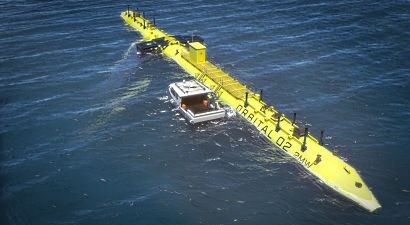
The company is currently in the process of manufacturing its first commercial 2 MW O2 turbine. With a swept area of over 600 square metres, the O2 will be the world’s most powerful tidal turbine, capable of meeting the annual electricity demand of over 1,700 UK homes. Orbital raised £7 million in crowdfunding to deliver the turbine along with £3.4 million of funding raised by the Scottish Government through the Saltire Tidal Energy Challenge Fund. The O2 project is also being supported with European funding via the Horizon 2020 FloTEC project and Interreg NWE ITEG project.
The first O2 turbine is currently expected to be grid connected at EMEC by the end of 2020 with a view to being fully operational in early 2021.
Securing a second berth at EMEC provides a route for the company to deliver a 4 MW floating farm at EMEC’s Fall of Warness tidal energy test site, off Orkney’s northern island of Eday. Estimated installation for the second turbine is 2022.
Power exported from the turbines, via EMEC’s subsea cable and onshore substation, will feed the national grid on Orkney. During the previous testing campaign of the company’s SR2000 turbine in 2018, up to 25 percent of the Orkney electricity demand was met by the single prototype at times.
“We are delighted to have secured this second berth; it’s a vital step towards delivery of our first tidal array” said Andrew Scott, CEO at Orbital Marine Power. “The current O2 build is progressing in line with expectations, thanks to a fantastic supply chain we have working with us, and this second berth provides us the opportunity to set the vision for how we are going to further the commercialisation of our industry leading technology and accelerate the deployment of tidal energy at scale globally.”
Neil Kermode, Managing Director at EMEC, added that this is fantastic news for the tidal energy industry which has been going from strength to strength over the last three years as more gigawatt hours have been fed into the grid than ever before. The first floating tidal energy farm marks another step forward for the sector which is demonstrating that it will be a vital part of the world’s drive towards net zero.
For additional information:

